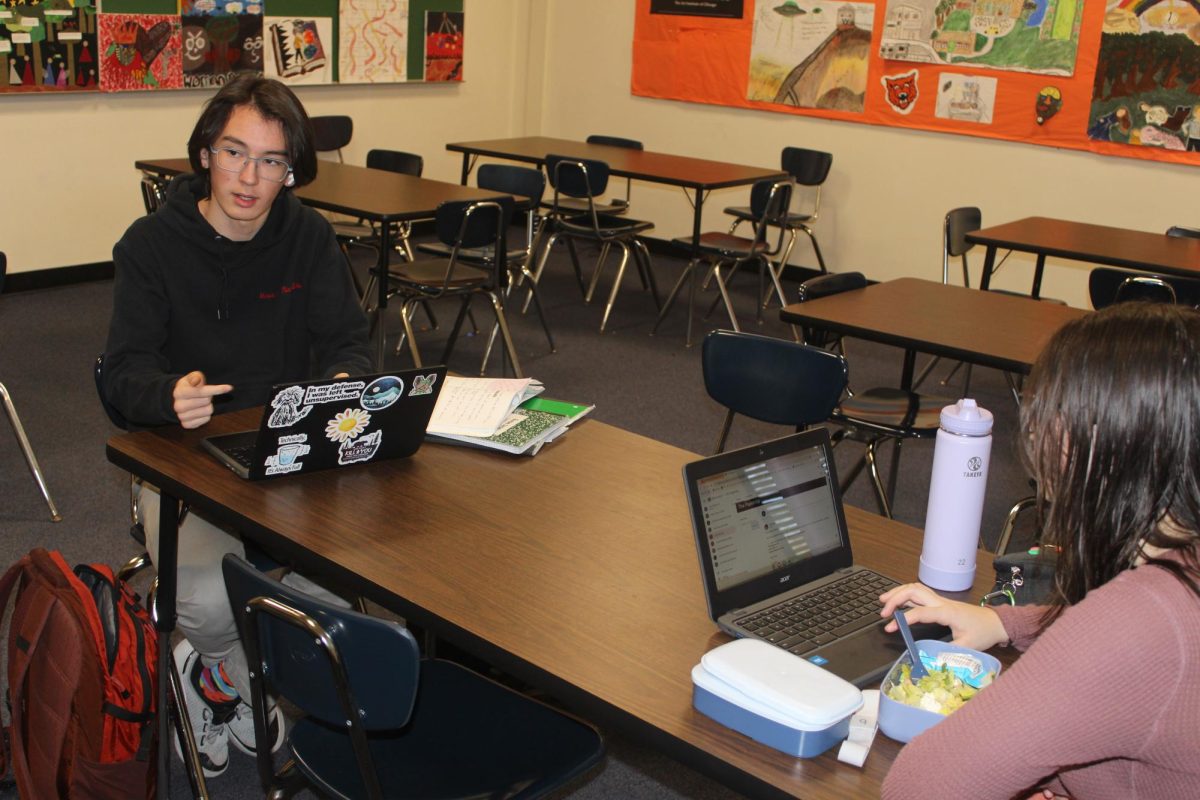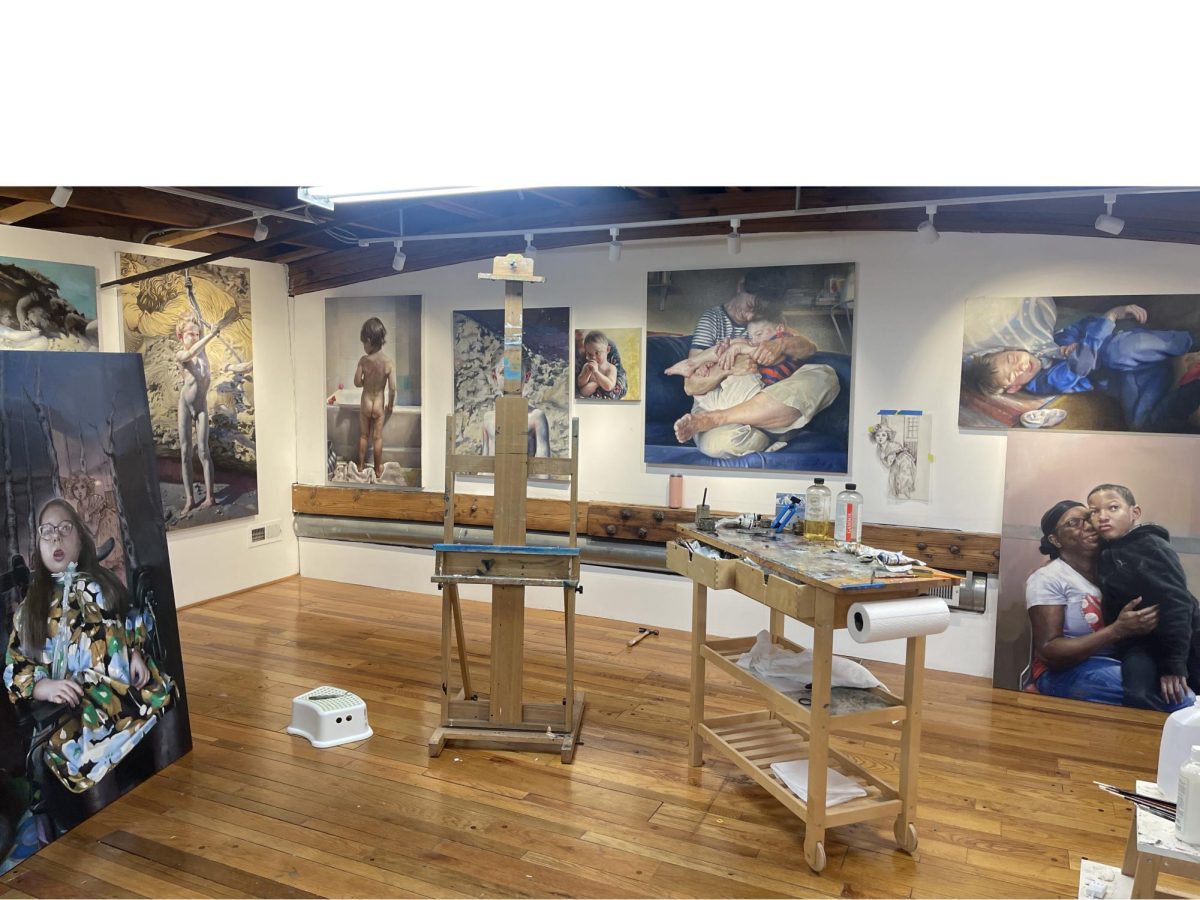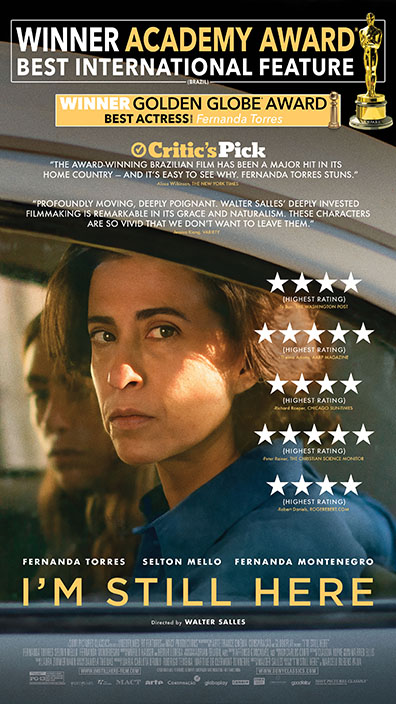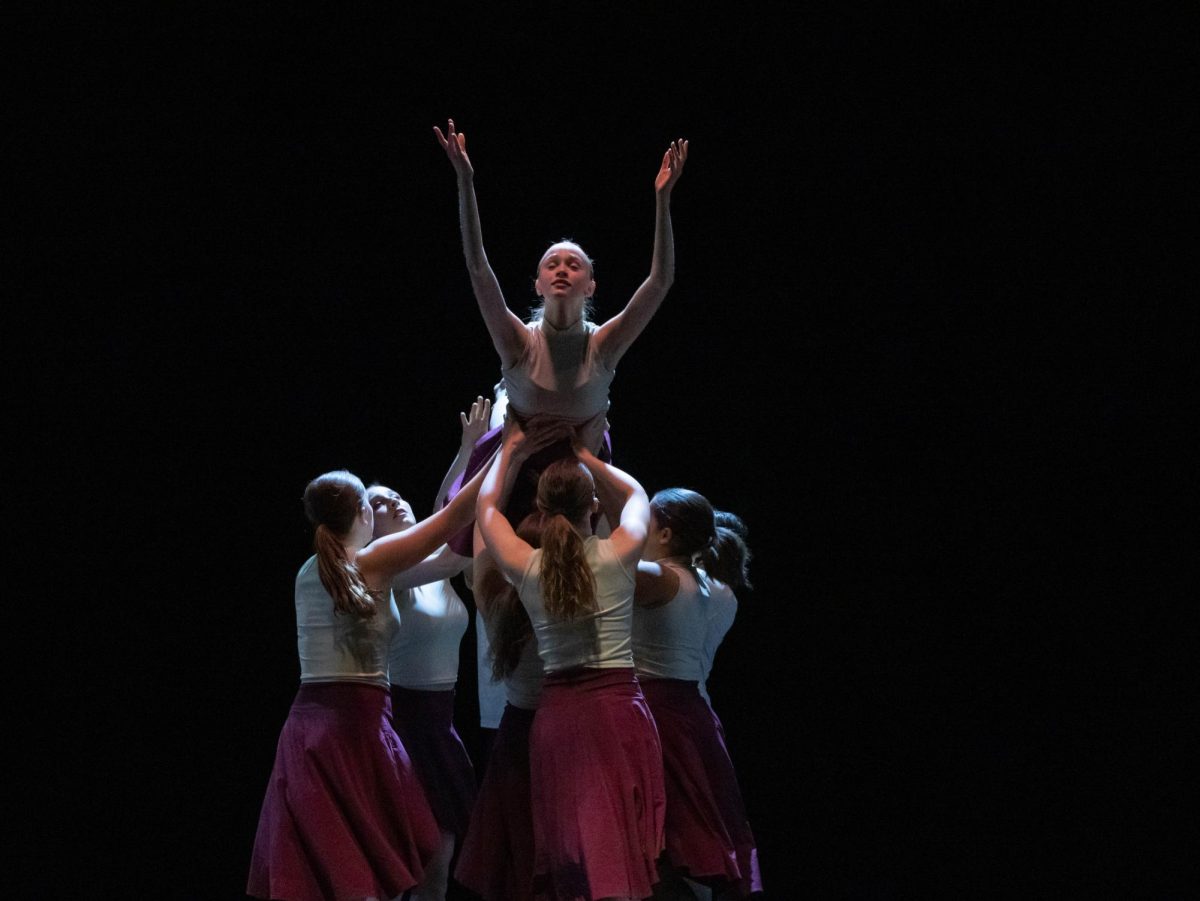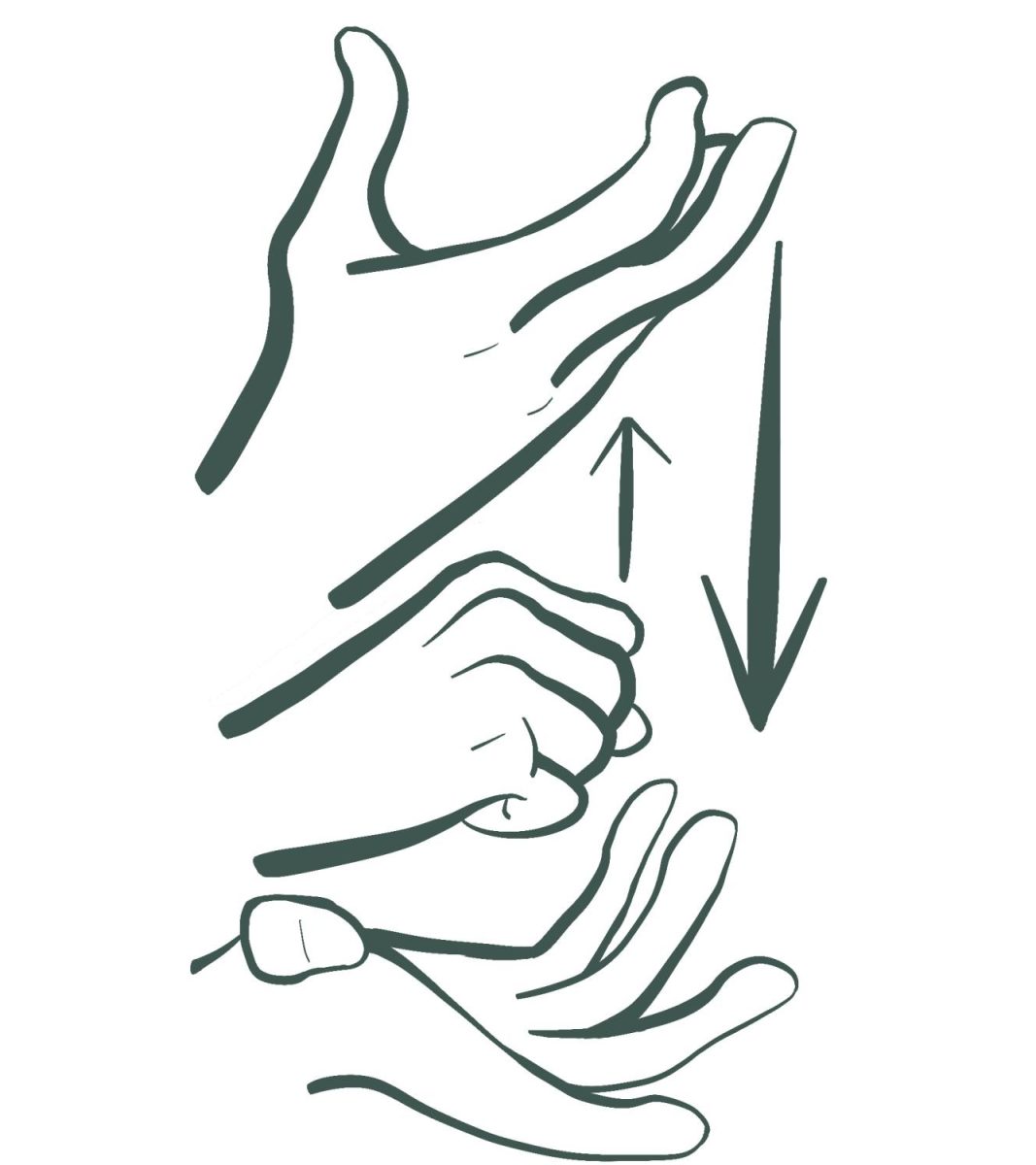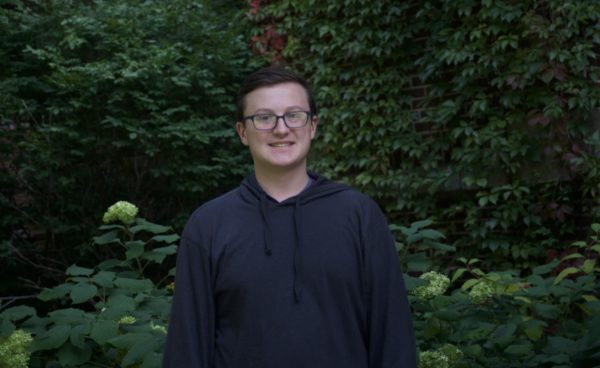The Paperclip
The Evanstonian isn’t the only student-run publication at ETHS. The Paperclip — ETHS’ own literary magazine — is completely student run with its content written and submitted by the ETHS student body and then formatted by the board. This club makes sure ETHS gets its dose of literature every school year.
Paperclips’ editor in chief Louise Baer revived the magazine after quarantine was over. Baer says that she wanted to start a literary magazine but did not know that The Paperclip had already existed.
“I spoke with my sophomore English teacher, Mr. Belgrade, and he told me about the Paperclip and how it had been stagnant for a few years,” Baer stated. “He helped me find a sponsor, I recruited my friends to join the board and the rest is history!”
Now, the magazine is back and better than ever, with three issues being made each school year. The one in the works right now is The Paperclip: Flannel Edition.
“The theme is basically anything autumnal. This can be taken in a more literal sense; leaves changing, halloween, etc. it can also be more abstract; times of transition, darkness vs light, etc. People can also submit things that don’t have anything to do with the theme!” Baer explained.
The Paperclip strives to make the submission process easy, and any interested students are welcome and encouraged to submit their works.
“We have a google form that can be accessed by scanning the QR code on our posters all over the school, or the form linked in our instagram bio, @ethspaperclip. People can also submit to our email at [email protected]. We accept all submissions, so if a student submits their work they WILL see it in the next issue,” quoted Baer.
The Paperclip is always looking for new members and submissions for their next issues to make sure students’ voices are heard through their writing, whether you have works you’d like to see featured or are interested in joining Paperclips’ board.
“The Paperclip board is a very welcoming space. Some of the meetings involve more simple activities like organizing submissions or hanging up posters, so it’s also just a great place to chat and take a breather from the world,” Baer said.
If you enjoy anything related to arts and literature, from poems to graphic design, getting involved in The Paperclip is an amazing opportunity for you.
Frequency
Frequency is a publication at ETHS that brings numerous literary elements to this school. This unique magazine features work from the students in the club themselves. The club president, Lilian DiCrescenzo, works with the members at the start of each month to form a magazine.
“People decide what project they want to work on for the month, and I make sure everyone has a role and the materials to do it and everything. I also do most of the graphic design for the magazine and website, and I’ve put a lot of my own artwork in our issues,” DiCrescenzo says.
DiCrescenzo formed Frequency because she had an idea for a magazine with a “zine format,” as well as the fact that there were not enough fine art extracurricular activities at the school.
“We’re different from other ETHS publications like the Paperclip in the sense that this isn’t meant to be a showcase of student work. It’s meant to feel like one large art project rather than a bunch of individual pieces, and it’s meant to feel like one large group instead of a bunch of individual artists,” DiCrescenzo states.
Everything in Frequency is written by ETHS students in the club, but DiCrescenzo says this year they will allow some outside submission.
“We publish pretty much any medium, but mainly photography, art, and writing, as well as music and film reviews, fashion inspiration, monthly playlists, and stuff like that.” DiCrescenzo says.
Frequency magazine is a tight-knit community, as everyone involved in the process bonds greatly while putting together the magazine.
“I like seeing people work on their projects from start to finish and being able to edit them all together. Everyone is so talented, and I love reading everyone’s writing and seeing everyone’s art come together,” DiCrescenzo says.
If you are interested in joining as a member of Frequency, you can email DiCrescenzo at [email protected], or follow them on instagram @frequencymageths. You can also view past issues on their website, and Frequency is hoping to release a new one each month.
If you are looking for a way to get involved in art at ETHS, showcase your abilities in literature, or just join an extracurricular, Frequency is a great pick for you.
Soap-Making Club
The club bringing cleanliness to ETHS is the Soap Making Club, where students are able to design and create their very own soaps.
However, making soap isn’t all the club has to offer – students are also given the opportunity to learn about the science behind how soap is made, which was a reason the club’s sponsor, chemistry teacher Neil Reimer, helped form the club.
“Its a perfect venue for students who are interested in art and like creating things, but to also bring in that science-y aspect of it is very fun,” Reimer explained. “Once you cut your first bar of soap, you’re going to be hooked forever.”
The soap making club operates in cycles, with the full process taking about nine weeks.
“Right now we’re in our rookie soap making season, and we’re going through a nine-week intro program where students are becoming comfortable working with the scientific materials,” Reimer stated. “They’re learning how to use the equipment, and they’re learning how to make bars of soap.”
After bars of soap are made, the members can either take them home or get together to sell them at pop up shops.
The Soap Making Club is a relaxing way to spend your after school time, and it’s beloved by its members.
“My favorite part of soap club is definitely when the soap is starting to solidify and I get to decide what colors I want to use, what fragrance, how I want to swirl everything together, etc,” says student Cory Coleman, a member of the club since it began.
If this topic interests you, the Soap Making Club is just starting their season and would love to have you. This club is much more than its name, and in the words of Reimer, it’s “an intersection of science, art and beauty.”


